Nobody Can Figure Out The Answer to This Math Problem
Next time you have a math assignment, you may not want to take to the internet to get it figured out because if it’s one thing we know, it’s that people cannot be trusted to do math.
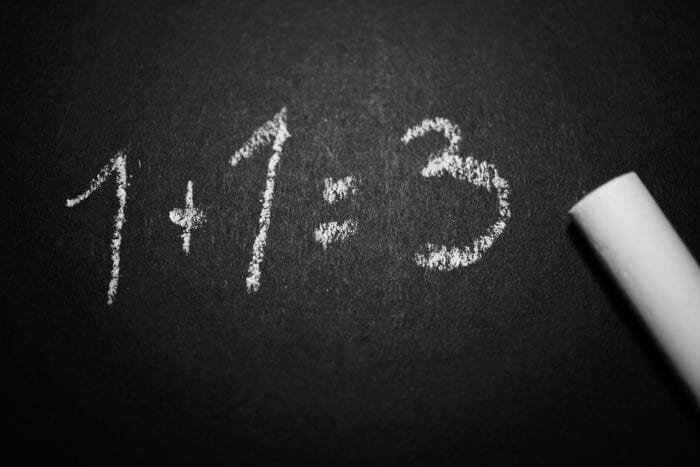
Once again, Nobody Can Figure Out The Answer to This Math Problem and it has the whole internet divided.
The math problem is:
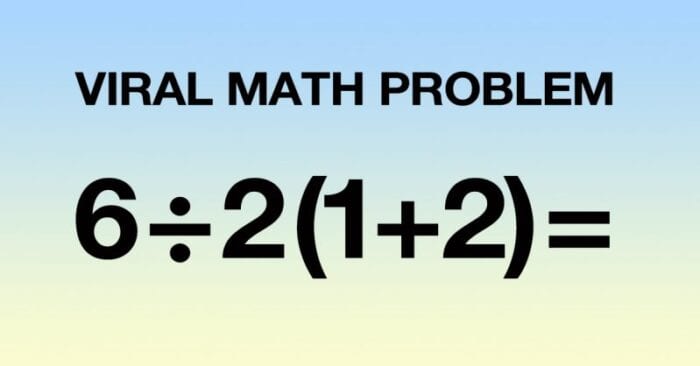
6/2 (1 + 2) = ?

Some are quick to jump in saying you need to go in the order of PEMDAS (Please Excuse My Dear Aunt Sally) like many of us were taught in grade school.
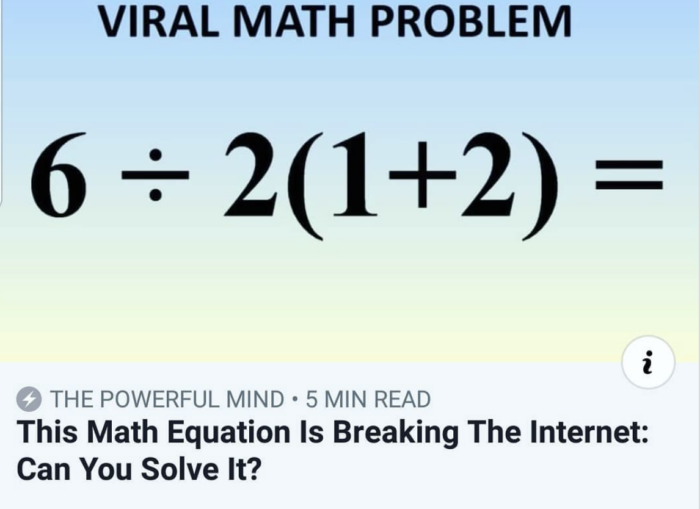
Others, disagree and say it’s acronyms BODMAS to follow.
Either way, most people are coming up with the answers 0, 1, 3, or 6 which are presumably wrong.

Why?
Because the answer is actually 9.
Here is an overly complicated breakdown of the equation:
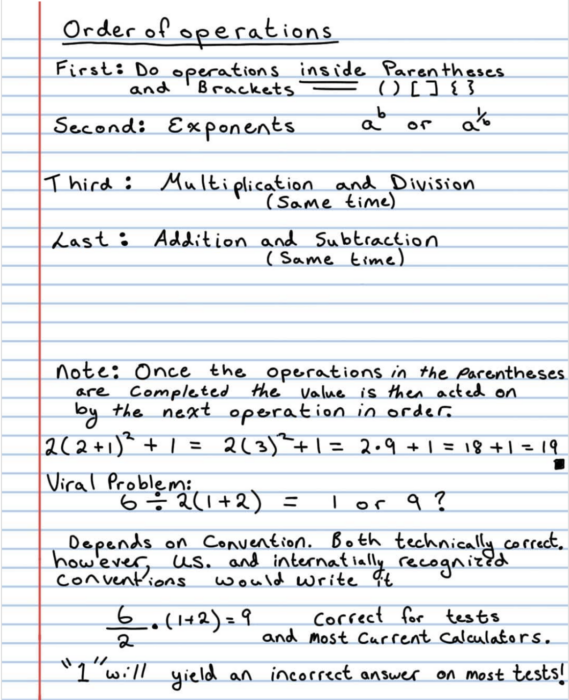
But to dumb it down for those (like me) that have math as their weakest subject, here is a YouTube video going over the equation:
So yeah, technically the answer is 9 but can also be 1? I am more confused now than when I started.
So, which is it? What is your answer?!
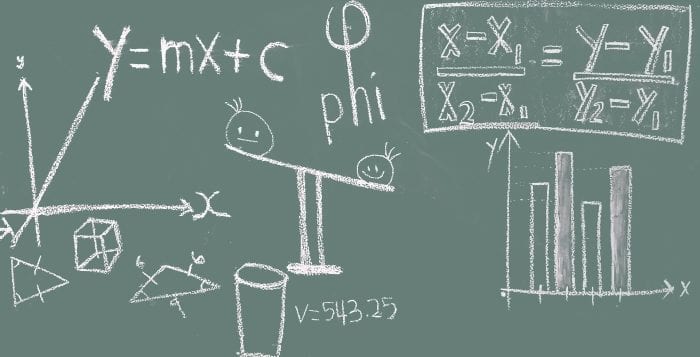







I came up with 3…… because the figures in the parenthesis means something different to me. It is just saying 2+1 is 3 and is the same answer as 6/2 (6 divided by 2) which equals 3. I didn’t get “new” math when they tried to push it onto my daughter when she was in elementary school and I don’t understand common core and I certainly don’t understand this; but doesn’t mean of course it’s not valid. To sum this comment up symbolically, I like old, black and white movies, (new) animated movie cartoons, family gatherings, and no stress in my brain.
P First (1+2), = (3)
E
M Multiplication and division are ordered by which you come to first. Left>right
D Next. 6/2, = 3
A Addition and subtraction are ordered by which you come to first. Left>right
S
3(3) = 9
@Leisa Cammuse, I say you are correct! That’s the way I was taught in High School!
This discussion is moot. Humans no longer do this kind of math anywhere it matters to society. In practice, this is put into a program and it would be one of these:
a = 1+2
b = 6/2
return a*b
Or
a = 1+2
b = 2*a
return 6/b
One of these will give the desired answer because in one case your money transfer will work and in the other it will not or whatever the application is. Whichever one gives the desired practical outcome and is validated by testing is the intended interpretation.
And then, the QA person that finds the bug files a report against the stupid programmer that wrote something as confusing as 6/2(1+3) into the code in the first place, and that person is fired and they no longer get to make these dumb expressions.
@Dave W., Algebra 1?
The answer is 9
It’s a poorly formed equation, which leaves ambiguity, which is why I tried to tackle this as systematically as possible. First, though, the arrogance in these comments from people who can’t even use basic grammar is astounding. Anyway, here’s my reasoning for better or worse:
1. putting the 2 next to the parenthesis is the same as putting a multiplication symbol between them. It is implied. This is like “2ab” is the same as “2 x a x b”. So we’ll start by putting back the implied symbol.
2. The order of operations we were taught was intended to pair the M & D together and the A & S together because you do these pairs at the same time and in any order because D & S are simply the inverse of the M & A. When you convert them to “multiplying by the reciprocal” and/or “adding the negative” you are carefully handling each term without the the incorrect need to figure out which to do first.
3. I think we all agree the parenthesis are the first to go when actually combining.
Put all of these together:
6 / 2 (1 + 3) original
6 / 2 * (1 + 3) show implied multiplication symbol
6 / 2 * 4 parenthesis first
6 * 1/2 * 4 convert the divide to a multiply by reciprocal
12
I really wanted to get a 1 or 9, but will say I’m happy that I’ll be earning the ire of so many people who are obviously emotionally invested in this. One last note, there are many examples of calculators being wrong. I do tend to place more faith in Wolfram Alpha and I just looked at it agrees with me 🙂 Happy mathing!
@David B., 8 internet points for spotting my typos 🙂
@David B.,
Your answer is correct as you wrote it with 1+3 in parentheses. However, the original problem listed has 1+2 in parenthesis. This will give you the 9 you so desired.
@David B., it is 1+2 not 1+3
how can you do the math when you can’t keep the numbers stright..lol
Anyone that says it’s 1 and not 9. I will bet them money that they are wrong. First of all i was an honors math student in junior high and high school. Also even if you not good at math they tell you the answer is 9 on the article. Furthermore a calculator will give you 9 when you write it out the way they have it and also as (6÷2)(1+2). Both ways are correctly wrote out. If you get another answer your not doing it right.
@John,the notation is inherently ambiguous. Would you think that this is also a way to write the equation?
6
———
2(1+2)
That resolves to one. However, if written in common notation for computer calculation, the formula representing the above example would look more like 6÷(2(1+2)). Therefore, the answer as written for computer calculation is 9, but if you are not using computer syntax it could also be one.
This is an exercise in syntax and not math, per se.
@John,
That is only if you believe the six to be divided by 2 rather than being divided by2(2+1). The problem is in our communication and our understanding of what is written and meant accurate of intent.
@Denise, yes there are at least those two understandings
Scary how much ignorance exists out there. Your answer is WRONG! Has nothing to do with internet, or calculators or the “gobbledy gook” expressed in your solution!
Here is the answer, plain and simple:
Operate within the parenthesis first. So, 2+1=3. Twice 3 =6. 6 divided by 6 = 1! “Piece of cake”, eh??
It is very simple.
The answer is 1
People try to over complicate and get this wrong.
@Al Viljoen, agreed. It’s 1.
We were taught in our school this, when we were 8 years old)).
6÷2(1+2)= 3(1+2)= 3×3=9
And this, when we were 9 years old
6÷2(1+2)= 6÷2×1+6÷2×2=3+6=9, but there were y, a and b instead of numbers)). I hope it’s a joke that people cannot calculate that..
The order is unclear. i see 2(1+2) as a number. they need to clarify it. I read it as 6/(2(1+2)) not (6/2)(1+2)
@Jami Milder, you can’t open parenthesis twice in a row without closing one that is when brackets come in to play. That’s why your answer is wrong the way your looking at it should be the second way you typed it. (6÷2)(1+2)
1 Of course I learned math before calculators. and by the way i was taught, the answer is 1 6 divided by the product of2 time 1 plus2 which is 3. so it’s 6 divided by 6 which is 1. If they wanted it the other way write it (6/2)(1+2) is 9. so this is an incorrect equation.
@Jami Milder,
No answer is 9 because 6/2(1+3)
Is 6/2*3
Is 3*3
=9
on your argument x/2y =xy/2
The answer is ambiguous because the question is ambiguous. There is no actual consensus on implied operators. I can point to authoritative sources that contradict each other. The use of an obelus complicates matters.
Yep…my son Ryan is in 3rd grade and got this right! The answer is 9.
You are correct and you are wrong the answer is 9 to the first math question and 12 to the 2nd , reason is you removed the 2 and put in a 3 in the equation….
9
The answer is 9 and only 9. The reason is because the problem is more clearly 6/2x(1+3), but when you write an algebraic equation the multiplication symbol is implied and dropped giving you 6/2(1+3). Therefore, following correct order of operations you solve:
6/2×3=
3×3=
9
If multiply the 2 and the 3 first you are breaking order of operations rules and resulting in the “other” answer of 1 that is indeed incorrect. Math is absolute and governed by rules that can’t be broken otherwise it would be useless for its purpose.
@Jordan Katz, Thank you!!!
@Jordan Katz, that’s not right… the answer is o because (2+1) is 3… and 6÷2÷3,,, therefore 3×3=9
@Nicky, I tried to type the answer is 9 because (2+1) = 3 then 6÷2=3 so 3×3=9
@Jordan Katz, if you solve it in an equation solver you will see the answer is 1, since 2(1+3) is treated as 1 expression in Algebra. A phone calculator does indeed rewrite it as 2x(1+3), which would give the answer 9. That is why there is a debate around it, but if you’re solving this algebraically the only right answer is 1, since 2(1+3) is treated as one expression.
@Jordan Katz, exactly!!! I don’t get why there’s an argument over this. Lol!
@Abrie, You cant get the correct answer if you learned math with a calculator. Books of the past will show you the correct way, Books!
@Jordan Katz, answer is 1, bud. Follow the order of operations and you’ll get the right answer.
There are no exponents in the original problem
I just tried to submit my comment and your stupid site has too many interruptions…..; The answer is 1
6÷2(1+2)=
6÷2=3
1+2=3
3(3)=9
@Misty,
You have to multiply the 3 you got in by 2. Which gives you 6. 6÷6 =1
@Pen, Where does that come from? The answer is 9. The fact that parenthesis, in this context, always mean multiplication is the only thing needing to be known. The rest is pretty straightforward. I am not a math person but I got it immediately. It was first year algebra in 9th grade, 1965. So simple. How did this get so complicated? One could surmise since this was the ONLY method of math taught in 1965 and none other, this would bear the most weight in terms of correct procedure.
There can be only one answer and that is 1 .
@Charles Giambrone, yes! Exactly.
6 / 2(1+2)
2*1=2, 2*2=4
2+4=6
6/6=1
@Kelly,
Your are so right .
@Kelly, That is not the way you do calculations. Whatever is in parentheses always is done first. (1+2)=3. Then when multiplication and division are involved you simply take them in order from left to right. 6/2(3)=3(3)=9.
There’s nothing controversial about this other than that it is gaslighting. The answer is 1.
6 ÷ 2(1 + 3) is NOT THE SAME as 6/2 * (1 + 3)
To make it out like it is –> Gaslighting. Get real.
@David Ward,
You are so right .
@David Ward,
The ÷ symbol is absolutely the same as the / symbol, meaning it follows the same order of operations. So… no.
@Adam, he’s actually right bc in the equation as written the 6 is divided by 2(1+2).
When you write it as 6/2 x (1+2) it changes it.
It becomes 3×3 vs 6/6: bc the original says 6/2(1+2) or 6/6
@David Ward, you’re absolutely correct. I’m shocked and somewhat mystified that people are getting something other than 1. I feel like anyone who took math past seventh grade only has to look at this to solve it rather quickly. Of course there’s a right answer – it’s “1”
If there are three slices to a pie, and there are two pies and six people, how many slices are there for each person?
@RainyDayInterns, that’s how I look at it.
@RainyDayInterns, so then the equation would be :
6/(2×3) and not the equation in the original question.
1